Years ago, I was told that a small lake in the Lost River headwaters here in Idaho was "basically fishless—a few small rainbows." Not long after that, while camping with my kids, we took a hike to that lake, and I stowed a fly rod in my pack, mostly because the hike paralleled a small creek most of the way up the mountain, and I'd been wondering if the stream held any trout. We didn't fish the creek, opting instead to trudge up the trail to our destination if, for no other reason, than to see what was sure to be a stunning view of the lake and the mountains around us.
As we arrived, the view, was, indeed, amazing. Looking behind us, Idaho's Mt. Borah tickled the clouds a good 50 miles away, with the valley, ribboned with the river and dozens of spring creeks glistening below us in the summer sun. But we also noticed that rise rings dimpled the lake, and I spent a good three hours putting the kids on sizeable backcountry rainbows that hadn't seen a fly in ages.
Fishless? Uh-huh. Sure.
A couple of summers ago, I wandered up a fairly well-traveled trout stream in Colorado's Sawatch Range, west of Leadville. It is, indeed, bursting with 6-inch brook trout and some slightly larger browns and rainbows. In some stretches, there are even cutthroat trout (albeit likely not native to the drainage) and the hybrids they make with the introduced rainbows. It's a "grand slam" stream, where an angler can reasonably expect to catch all four species, plus the cutt-bow, in a day on the water. But the first time I fished it, it was against the advice of the guy at the counter in the local fly shop.
"Just little fish," he said. "Not worth the effort."
Despite it not being "worth the effort," it gets some pressure, particularly in its lower reaches near a busy campground and a couple of trailheads that lead to some of Colorado's highest "fourteeners."
Higher up, though, it's not too tough to get away from the crowds, and the stream is more of a meandering meadow creek that features good cover, cutbanks, slower, deeper water and, if an angler is willing to become a hunter, bigger fish. In fact, there are some really big fish, particularly for a stretch of water that runs only 20 feet across in most places.
Trouble is, you have to work for it. You have to leave the road and undertake an honest-to-God bushwhack. Most trout anglers—including the guy at the fly shop, apparently—aren't willing to do that when, just a few miles away, the chance to catch fat browns on the upper reaches of the Arkansas River awaits. And it's true. Bigger trout do tend to live in bigger water.
But bigger trout can and do live in small streams. We just don't see them much. And it's not because we don't fish them enough. It's that we don't fish them smart enough. I was reminded of this the other day when I was flipping through Trout Unlimited's collection of fishing instructives, aptly called, "Trout Tips." Renowned angler Conway Bowman, who's best known for casting to, and catching, mako sharks off the coast of San Diego, offers up this little gem:
"Fishing for trophy trout is much like hunting big game. The dedicated big-game hunter walks, spots, stalks and shoots; of course you don't shoot (perhaps line), but the ritual is the same if you want success on the stream."
In that little trout stream that runs through the alpine meadows of Colorado's high country, the "big game" might be a 16-inch brown. Not a trophy, you say? Nonsense. Perhaps not in the classic sense of the word, but for any backcountry angler who's caught and released his or her share of 8-inch trout, something that big is remarkable. And I would argue that it requires all the stealth of an elk hunter on the stalk—an element that's not required or employed by the "cast, swing, strip, step" crowd down on the big river.
In small water, stalking and spotting big trout are often the most difficult skills to learn. Reading water? For most of us, it's second nature, particularly in small streams. But hunting? Well, that's for hunters.
Unless you want bigger fish. And they're there.
Here's how to find them:
Find out for yourself
Small streams all throughout the Rockies—or wherever trout streams run—have fish, and most have worthy fish, even trophies. It never hurts to prospect.
Stow your rod
When you find trout water, don't just be the blind caster. Sure, you'll miss the opportunistic trout here and there, but it'll be worth it. Instead, use your eyes. Shade your view with your hat and your hands and really look at likely holding water. Don't fish. Hunt.
Walk silently
Don't make a sound. Learning how to quietly wade a bonefish flat has made me a better "trophy hunter" on small trout streams. If I'm in the creek, my goal is to walk so silently so as not to make any noticeable noises or push any noticeable water. Better yet, I like to "hunt" big trout from the bank if possible, and I take care to never "silhouette" myself against the sky, preferring to hide my profile and, when possible, have cover behind me. Stare into the water and look for fins and tails. But also, look for flashes that indicate fish feeding on or near the bottom. Look for white mouths opening and closing. If you don't see these things, move on.
Look ahead
Particularly in slower water with cutbanks and overhanging willows and dogwoods, big trout will find a lie where they think they're safe. That's when they'll rise, and sometimes, they'll rise with regularity. But, if you're not taking your time and watching, you'll miss it and either walk right by them or spook them with your blind casts.
Line up your shot
And by this, I mean your cast, of course. If you spot a big trout rising periodically upstream of you, you'll likely only get one shot at it. Make it count. Practice the distance by casting your fly well away from your intended target. Measure your cast against your ability. Find the perfect launching pad and let it fly. And then pray a little.
Get down
If you see a big trout holding in a tailout or in a riffle, and you're armed with a streamer and want to put the meat-whistle right on its nose from an upstream position, you'll need to get low, depending on the weather, the light and the distance, of course. In smaller water, I don't hesitate to cast small streamers (yes, small—consider your environs. Big streamers in small water don't always make a lot of sense) from my knees. I calculate the distance it's going to take to put my fly right in front of the target trout on the swing, not on the strip. It just works better this way.
Cast serious food
Sometimes, in skinny, high-country water, trout will give anything that looks like food a serious look. And it's not a bad idea to go with something substantial, like a terrestrial pattern. On this little creek in the mountains of Colorado, I managed to catch a 15-inch brown that was rising so close to the bank that I almost missed it altogether. It held right against a tuft of grass, and the only reason I spotted the fish while staring at the run from about 40 feet downstream was because it actually moved the grass each time it sipped a small March Brown from the surface film. I put on a size 16 Adams (the smallest mayfly I had in the box) and made a solid cast. I didn't get a hit. I tried again. A refusal. I put on a foam hopper pattern two sizes bigger, and the brown nailed it the first time it floated by.
In all, from the patient stalking to the spotting of the trout to the eventual release, I probably spent 30 minutes on that one fish. Knowing that not many anglers will pull a trout like that from that small stream was gratifying.
But knowing that fish like that swim there in the first place? That's the real trophy.




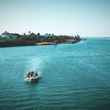
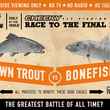
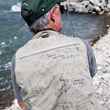




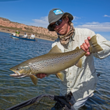
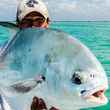



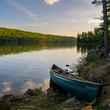
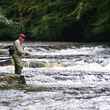



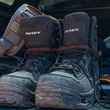
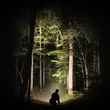



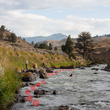


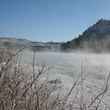
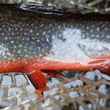
Comments
Jim Murphy replied on Permalink
Well written and packed with good info.
Pages